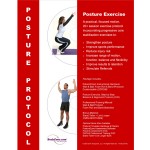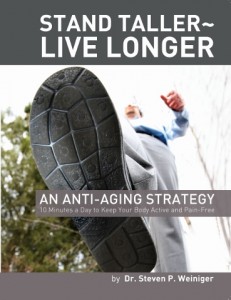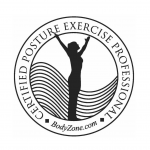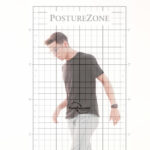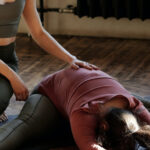Sleeping Position Can Reduce Risk of Alzheimer’s
Research Shows Best Way to Sleep to Lower Alzheimer’s Risk
People ask me “What’s the best way to sleep? On my back, side or stomach?” A recently discovered system in the brain suggests there really is a best way to sleep, with implications for your back, neck and spine health.
The Brain Sleep Research
Using mice that were genetically modified with genes from a glowing jellyfish, researchers found a previously unknown system which the brain uses to wash itself of waste. They named it the glymphatic system.
The “G” is not a typo – it’s Glymphatic, not Lymphatic. While the two are similar in function, your glymphatics are an independent system the brain uses to flush out toxic wastes. Researchers Nedergaard and Benveniste call it the “Brain Drain”. (1)
The glymphatic system is an internal plumbing system to rid the brain of toxins of everyday metabolism. The big news: the glymphatics drain away brain toxins only when you’re sleeping. So, when the glymphatic system malfunctions, the brain becomes clogged with toxins.
Why It Matters
Glymphatics work like a dishwasher for the brain, according to the lead researcher Nedergaard. When you get less than a full night’s sleep, “It’s like if you only use a third of the water when you turn on the machine. You won’t get clean dishes.”
Alzheimer’s disease, Huntington’s disease, Parkinson’s disease and other neurodegenerative and auto-immune diseases are all are strongly likely to buildup of toxins and inflammatory immune cells. Since our brains are very active, a lot of “junk” is produced daily, which is why the authors call the new discovery of the brains drainage system “revolutionary”, and that it “plays a huge role in the health of the brain”.
Best Sleeping Position for Brain Health
Your sleeping position is also important to optimize the flushing out of toxins. Gravity is a big factor in a mechanical system with pipes and valves that’s moving fluids, so it’s not surprising that sleeping sitting up doesn’t let waste drain efficiently. Neither does stomach sleeping.
Sleeping on your back is somewhat better. However, for best flow to allow the glymphatics to drain fluid and the buildup of toxins, the researchers recommend lying on your side. Moving periodically is also a good idea.
In other words, over decades sleep quality, quantity and position can play a really big role in how you age – as well as your risk for many illnesses. It’s a strong reason to prioritize a good night’s sleep as a vital facet of overall health.
Which is where comfort comes in. Stomach and back sleepers unaccustomed to sleeping on their side may be restless when making a change. Designing your sleep environment for your sleep position means paying attention to the little things because they can make a big difference.
Postural Stress While Sleeping
Low level postural stress from being in awkward positions stimulates pain receptors in joints and muscles called nociceptors. When nociceptor stimulation reaches a certain level, you may just roll over, or you might wake up with a twinge in your knee, a tightness in your back, or a cramp in your neck.
For your brain and your posture, here’s some tips by each PostureZone® to optimize your brain fluid’s flow with comfortable side sleeping (2):
- HEAD: Choose a pillow that supports your head keeping it in line with your spine. A thin middle and lower lobe can give your neck more support (I like Royal Rest). TIP for Contour Pillows: Turn it upside-down for a more gradual change in support surfaces
- TORSO: Shoulder problem? Lie with that side up, and let your arm rest on a pillow between your arm and your body.
- PELVIS: New to side sleeping? Put a pillow behind your pelvis for support.
- LOWER EXTREMITY: A pillow between your knees reduces twisting of the pelvis by separating them to be closer to hip distance apart. Challenges: Keeping the pillow in place if you move during sleep (moving is a good thing). Also, pillow size and proper amount of support can be an issue. Pillows are big, and fiberfill, down and other materials compress. The more weight you put on them, the more they compress. Pillows are designed for your head, and most likely your leg and thigh weighs more, causing too much compression. Instead opt for a knee pillow
designed to support the weight of your legs in proper sleeping posture.
Additionally, choose a mattress that’s supportive (see PostureMonth.org for how to choose the best mattress). Set consistent bedtimes and plan for ample shuteye. Sounds obvious, but if you’re exhausted when the alarm rings in morning, go to bed earlier. Avoid nicotine, alcohol, and caffeine just before bed.
Most of us should spend seven or eight hours a day sleeping. It’s a big chunk of life. So spend some time looking at making your sleep environment right to keep your body pain-free, standing tall, and thinking straight.
-
Nedergaard, Maiken, and Steven A Goldman. “Brain Drain.” Scientific American 314, no. 3 (2017): 44-9.
-
Weiniger, S, Stand Taller Live Longer: An Anti-Aging Strategy, BodyZone Press, 2008
For more about StrongPosture® and to incorporate it in your practice get the Posture Rehab Exercise Program and take the latest training via online course or hands-on seminar.


